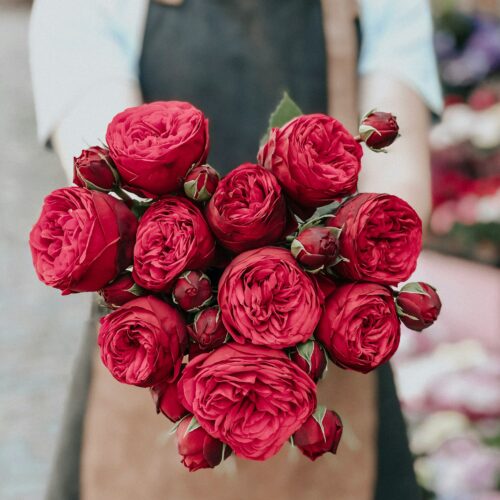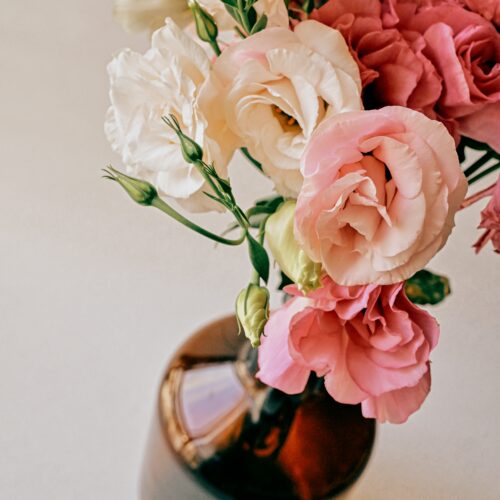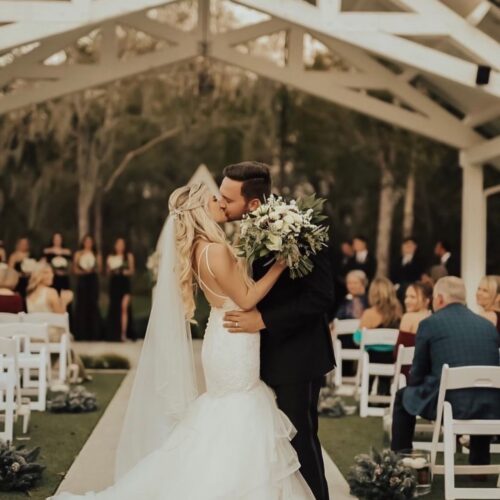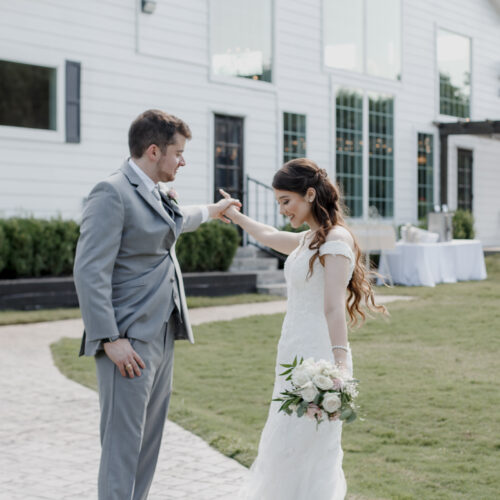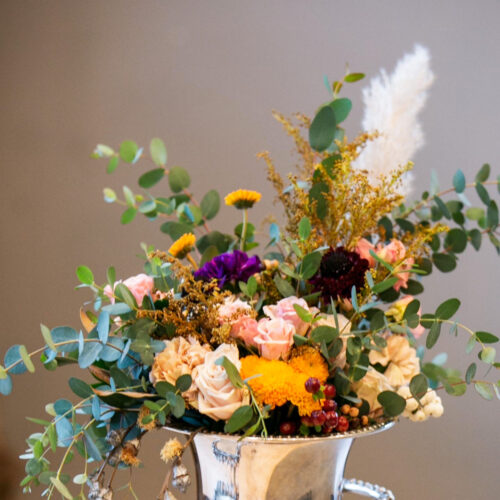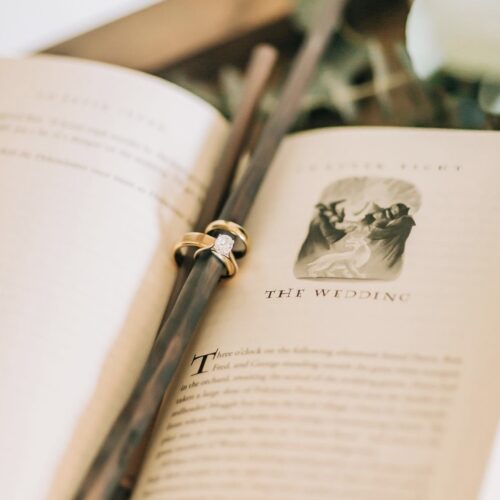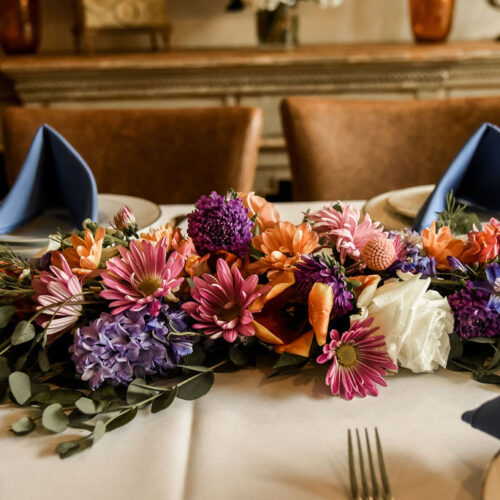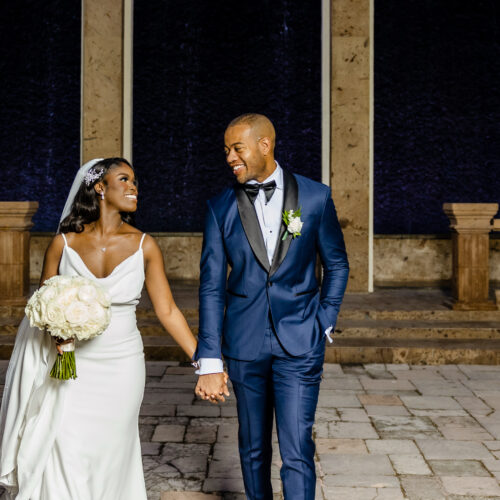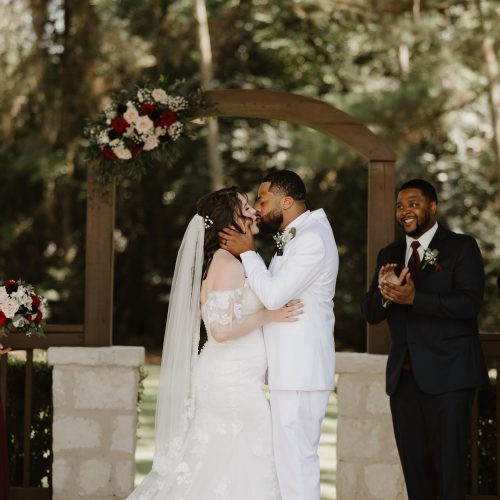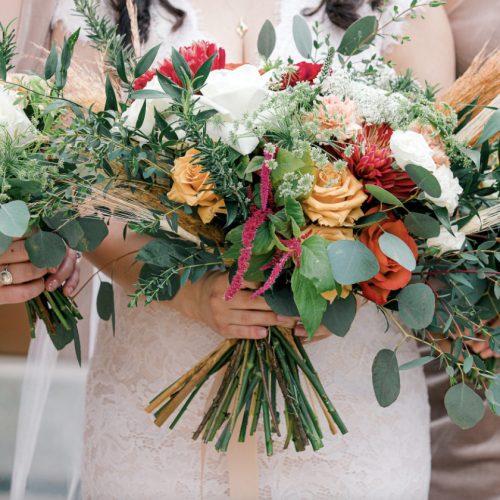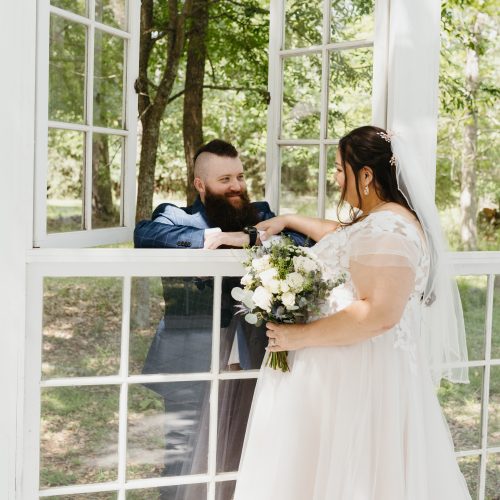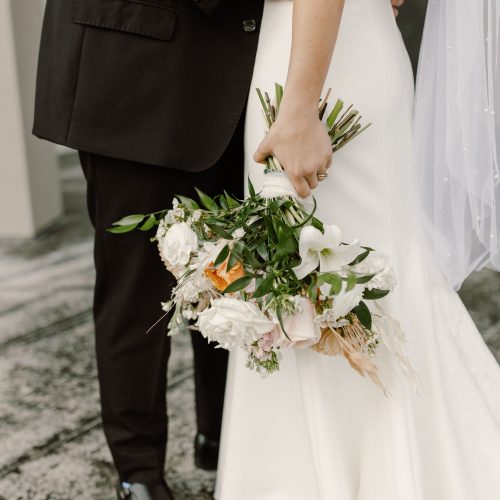When we think wedding flowers, bouquets for the bride and bridesmaids are what are probably the first thing to come to mind. But what about the groom and groomsmen, or the mother of the brides and grooms? They are honored guests and often are adorned with flowers that signify their importance for the wedding day. These flowers are what we call boutonniere and corsage.
The boutonniere is typically crafted with a single flower or small buds with a bit of greenery attached and pinned to the lapel of a suit coat. A corsage is a small bouquet or arrangement of flowers that is typically worn at the wrist or can be pinned at the shoulder. Corsages are also usually adorned with a ribbon as well.
Why do we do this, why is this traditional and something we continue to do? Now, these small arrangements may be used simply to adorn the suit wearing members of a wedding ceremony and honored guests, but there is a bit more to the tradition than what you see at first glance.
Boutonniere
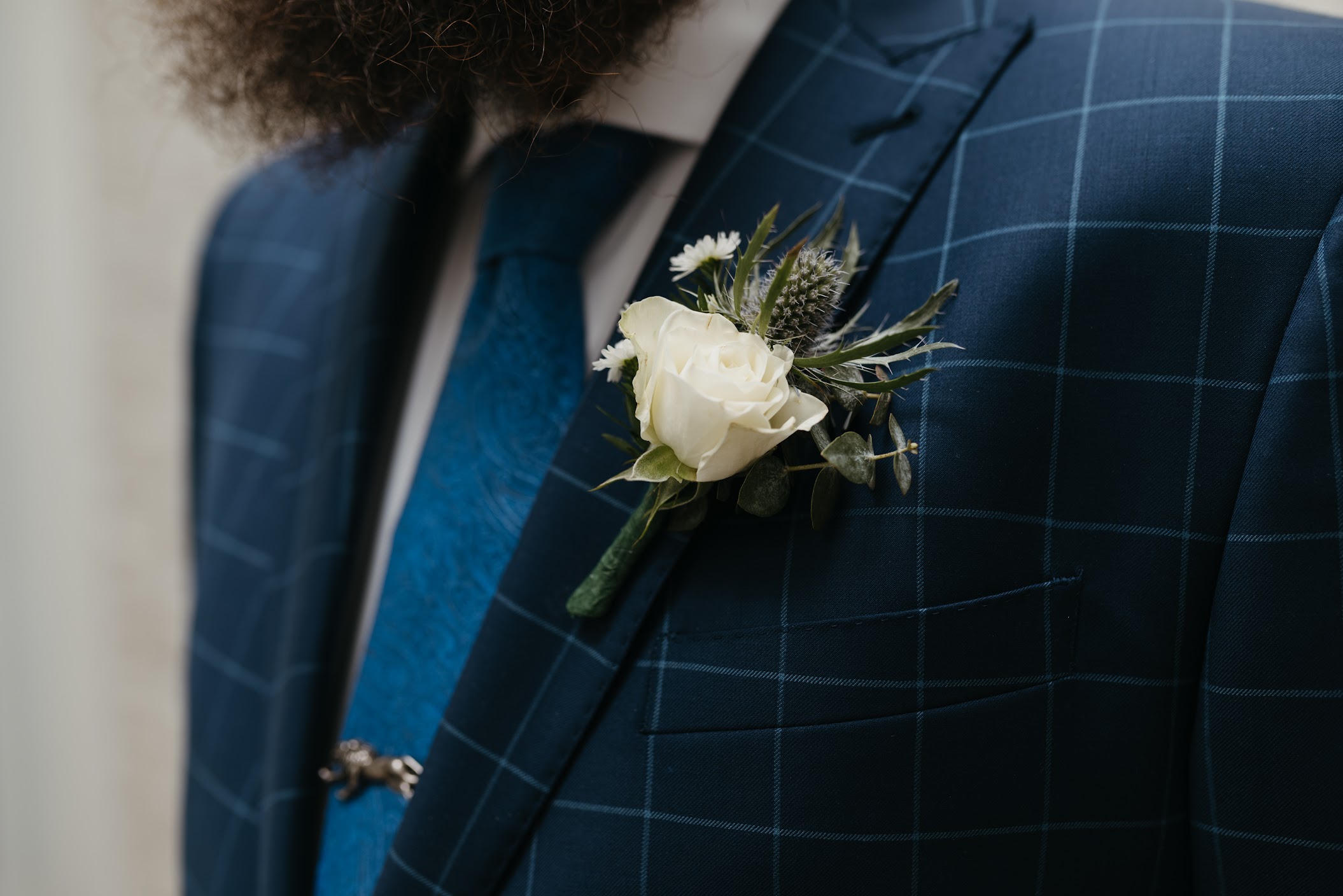
Traditionally when thinking of what men wear during the wedding ceremony, it has been the boutonnière which is simply defined as a flower or small bunch of flowers worn in a buttonhole. Boutonniere is a French word and is quite literally derived to mean ‘buttonhole flower’.
The boutonnière, or rather the wearing of flowers as adornments, seem to date back to ancient Egyptians and Aztecs. In these cultures people wore certain colored flowers to show support for athletes in sporting events. This is also a tradition that continues today by sports fans wearing their team’s colors. The boutonnière and flowers alike, throughout history have also been used to ward off bad odors, and impart good luck.
Moving through history, we see that during the Middle Ages boutonnières, or rather flowers, were used in battle as a way for one to identify friend from foe. This was most definitely needed as everyone in battle was adorned in steeled armor from head to toe. This practice was most notable in the Wars of the Roses when one family wore red and the opposing family wore white as part of their coat of armor and for their allies to show support.
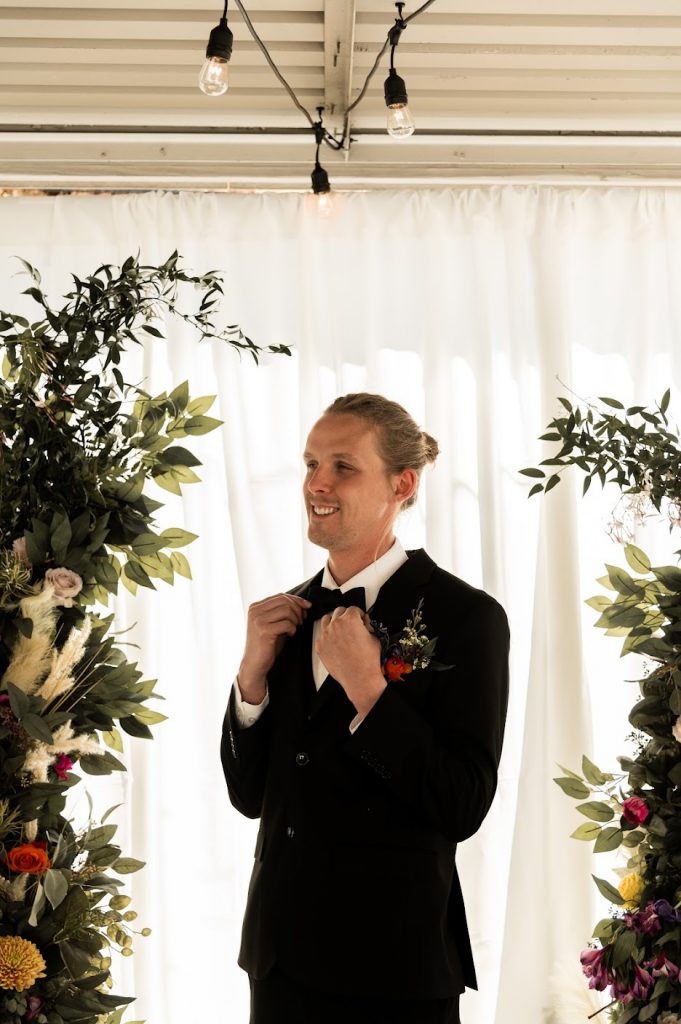

Additionally, during this time in the 15th century, a woman who was interested in a knight may gift him flowers or a scarf in the color of her dress to bestow good luck and her good graces on him as he went into battle.
As we enter the 19th century, the boutonnière we know today came to be through fashion and style by the introduction of the lapel on a jacket. The flowers are worn traditionally always on the left lapel, parallel to the outer seam of the jacket. The left side placement is to be “over the heart”, but also as the groom traditionally stands on the right side during the ceremony, the flowers will be seen when placed on the left side of the body. As ceremonies change, this is not always practical, so think about what the guests will see during the ceremony and place the boutonnière accordingly.
While it was commonplace to wear suit jackets on a regular basis, adorning oneself with flowers and a boutonnière was fairly customary. Now, because we see suit jackets and tuxedos in formal spaces, that is where the boutonnière has followed.

Of course, the boutonnière is quite popular for those attending prom or other formal dances in youth, but though that may go in and out of style, it continues to be a staple of weddings. Not just for a groom and groomsmen, but also for anyone deemed to be an honored guest.
Another floral item for those attending a wedding ceremony as an honored guest would be a corsage.
Corsage
Corsage is also a French word derived from ‘bouquet de corsage’ which translates to ‘bouquet of the bodice’ and corsages were traditionally pinned to this part of a lady’s attire. However, though we do still see pinned corsages, we also see wrist corsages more frequently.
The corsage itself seems to trace back to the Ancient Greeks. At that time the corsage was meant to be believed to ward off evil spirits with their fragrances as well as to symbolize good luck. A bride would traditionally hold the flowers, as a bouquet, or would attach the flowers to their bodies.
In France, corsages were originally worn by women to weddings and funerals and often pinned to the top of their dresses. Following through to the Victorian age, women would adorn the low cut neckline of their dresses with flowers. They could also receive a corsage, meant as a form of affection, from a gentleman to show who he wished to court.
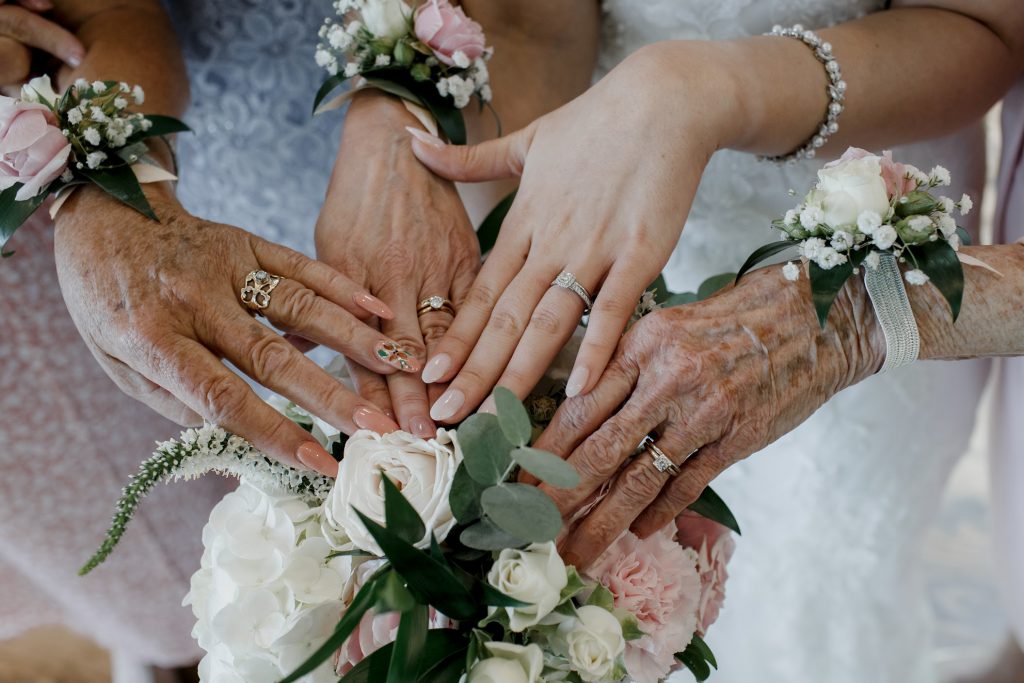
The corsage subsequently moved from the neckline to the shoulder in this time, as it was improper for a man to touch a woman in that area of her body. Style and fashion continued to force the corsage to migrate. As dresses evolved to thinner straps or strapless completely, wrist corsages became more popular.
As we move through history, it is still commonplace for a corsage to be a gift exchanged at events such as prom or homecoming. We have even seen corsages on holidays such as Easter and Mother’s Day.
Interestingly, there was a time in history where men would wear a boutonnière on Mother’s Day, as well as women wearing corsages. There was also significance in what color you would wear, white or red. Red or pink flowers indicated that your mother was alive and white was used to indicate that she had passed away.
Today, when thinking of corsages in the wedding space, it is used to show honor on a guest. A mother, mother-in-law, grandmother, favored aunt and so on. This person is not necessarily in the wedding ceremony but they hold more distinction over a guest.
Whether you are going for tradition in your wedding flower decisions or merely for aesthetic and honoring your guests and groom there is a boutonniere or corsage for anyone. They can be made with fresh flowers, dried, silks or a combination of all three. Floral designs, especially in the way of boutonnieres are not trapped in the traditional. You can cast whimsy, fantasy, and romance in your decisions, making your wedding day unique to you.
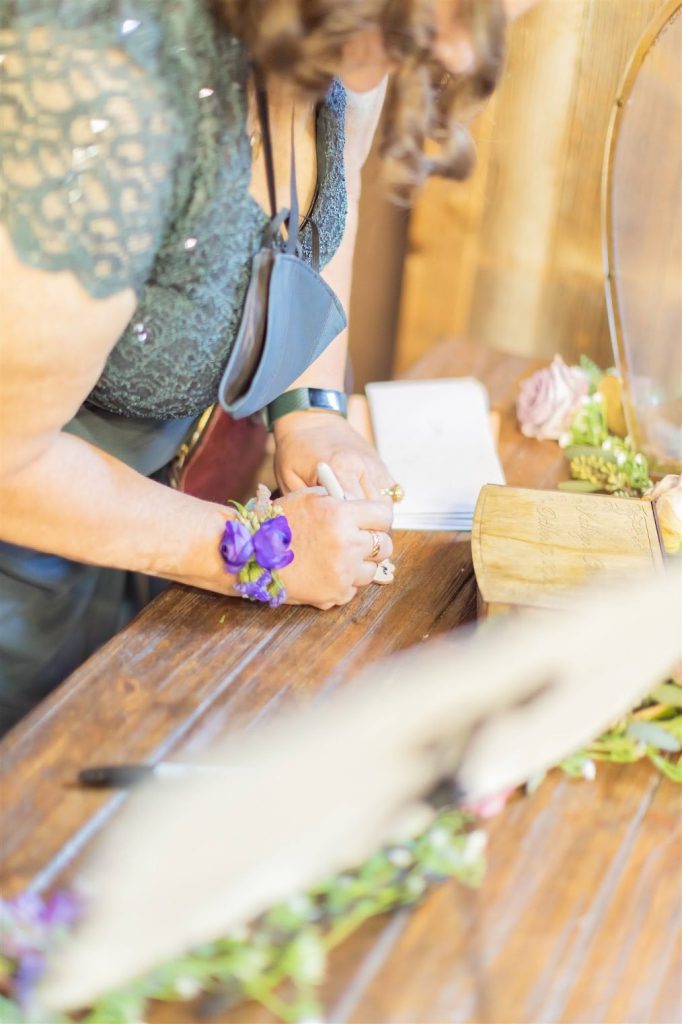
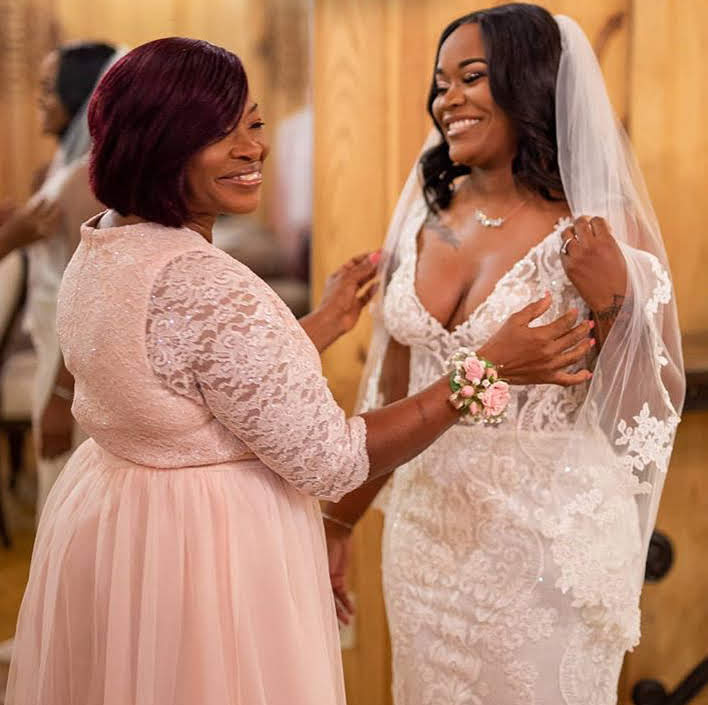
Sources
Lindasflowers.com ; Jones, Katelyn “The Important History of Boutonnieres & Corsages”
1800flowers.com ; Craig Wells, Elizabeth “The Corsage and Boutonniere: A Floral History”




